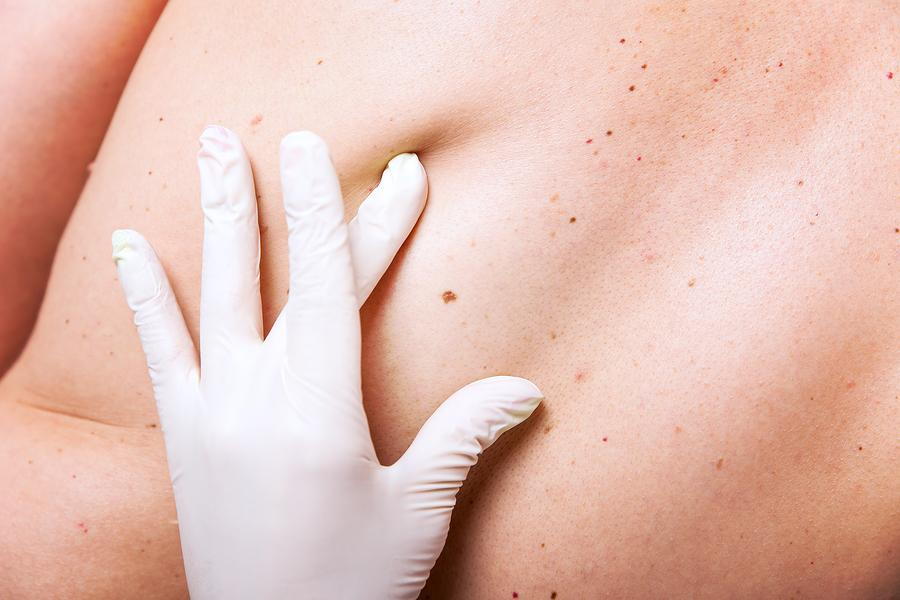Skin Cancer: Symptoms and Treatments
Learn More About Skin Cancer and Its Early Warning Signs
While we know the last thing you want to think about is skin cancer, it is extremely important that you don’t ignore the warning signs. After all, with more than 3 million Americans affected each year, skin cancer is more common than you might realize. Luckily, if skin cancer is caught soon enough, our Rockville, MD, dermatologists can treat the problem before it causes more serious and life-threatening problems. Here’s what you need to know about skin cancer, the warning signs, and your treatment options.

Different Kinds of Skin Cancer
While most people have heard of melanoma, which is the most deadly form of skin cancer, it isn’t the only kind. Skin cancer also includes basal cell carcinoma and squamous cell carcinoma; both can appear just about anywhere on the body but are most likely to develop on areas of the body that are regularly exposed to the sun.
Basal cell carcinomas usually appear as flesh-colored or waxy bumps and are often found on the neck or face. Squamous cell carcinomas often develop on the ears, face, or hands, and appears as flat, red lesions that may be scaly or crusted over.
Signs of Melanoma
It’s important that you are performing a self-exam on your skin about once a month so that you are able to detect changes as soon as possible. If in doubt, call your Rockville, MD, skin doctor and let us know what symptoms you are noticing. It’s always best to play it safe when it comes to your health. Of course, there are some warning signs to look out for, including:
- A very large mole or brown lesion (larger than the size of a pencil eraser)
- A mole that isn’t symmetrical or has a poorly defined border
- A mole that changes in size, shape or color
- A mole or dark spot that bleeds
Treating Skin Cancer
In order to create a treatment plan that will be effective, we will need to perform tests to determine the type and severity of your skin cancer. In order to diagnose skin cancer, we will often take a biopsy of the lesion or growth for testing. Skin care treatments include:
- Excisional Surgery: One of the most common treatment options, excisional surgery is a procedure that cuts away and removes the lesion, extracting some healthy skin along with it. This is an effective measure for removing both melanoma and non-melanoma skin cancer.
- Mohs Surgery: Another popular way to treat skin cancer, Mohs surgery is performed by removing thin layers of the cancerous growth until the cancer is completely gone. This process takes longer than other methods, however, it is often ideal because it preserves more of the healthy skin around the cancerous growth than traditional surgery.
- Electrosurgery: This method treats small or superficial cancerous lesions. It involves scraping the growth with a special tool before burning the area to kill remaining cancer cells. This procedure will often need to be repeated several times in order to completely remove the cancer and is not an option for patients who have cancer in difficult-to-treat areas such as the eyelids or lips, or those with more invasive carcinomas.
- Cryosurgery: If you are dealing with superficial squamous cell carcinomas (SCCs), then cryosurgery, the process of freezing the lesion, may be all you need. This procedure can be performed without anesthesia, as there is absolutely no cutting required. Sometimes multiple sessions are required to fully treat the SCCs.
Call Today
If you are noticing any suspicious growths or changes to your skin, it’s important that you have the issue checked out as soon as possible by a skin care professional. Turn to the experts at Shady Grove Dermatology in Rockville, MD, by calling (240) 246-7417.